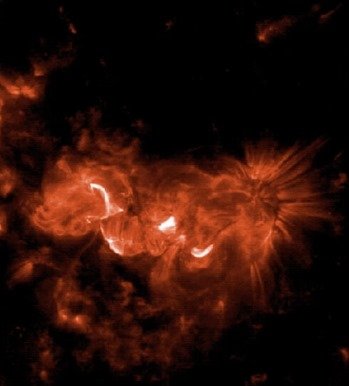
Solar Fury Unleashed: G4 Storm Batters Earth’s Atmosphere
G4 Storm Northern Lights or Tech Chaos Earth on Alert! A tempestuous solar outburst has been observed by the National Oceanic and Atmospheric Administration (NOAA), prompting a severe geomagnetic storm warning. This event, fueled by the sun’s fiery tantrums, could disrupt vital infrastructure and paint the night sky with dazzling auroras.G4 Storm Northern Lights or Tech Chaos Earth on Alert!
G4 Storm Stellar Fireworks and Earthly Effects
As the sun undergoes its perpetual nuclear dance, it routinely ejects material from its surface. This space weather phenomenon is responsible for the breathtaking auroras, both northern and southern depending on your location. A geomagnetic storm ignites when the sun’s activity intensifies, and the expelled particles buffet Earth’s magnetic field. These disruptions can wreak havoc on satellites orbiting Earth and infrastructure on the ground, potentially causing problems with navigation, communication, and even the power grid.
The current solar tantrum began early Wednesday morning, with a barrage of at least five eruptions aimed directly at Earth. The ejected material is expected to collide with our planet’s atmosphere by Friday evening, with effects potentially lingering through the weekend.
“The next few days are likely to be significantly more impactful than anything we’ve seen recently,” declared Mike Bettwy, the operations chief at NOAA’s Space Weather Prediction Center, during a press conference on Friday.

Decoding the G4 Geomagnetic Storm
The sun’s colossal explosions, known as coronal mass ejections (CMEs), propel streams of energetic particles into space. These outbursts, however, don’t always hit Earth due to our planet’s constant revolution around the sun. When these particles disrupt Earth’s magnetic field, a geomagnetic storm ignites.
NOAA utilizes a “G” scale (ranging from 1 to 5) to classify these storms. G1 represents a minor event, while G5 signifies an extreme storm. The most severe storms can trigger widespread blackouts and inflict significant damage on Earth’s infrastructure. Satellites can also malfunction during these events, struggling to maintain orientation and transmit or receive data.
The current storm is classified as G4, categorized as “severe.” It originates from a cluster of sunspots, dark and cool regions on the sun’s surface, roughly 16 times wider than Earth. This cluster has been actively flaring and ejecting material every six to twelve hours, with the most recent eruption occurring around 3 am Eastern time on Friday.
Impact Behind the Scenes: G4 Storm Subtle Disruptions
Unlike warnings for tornadoes, NOAA’s pronouncements regarding geomagnetic storms are not directed at the general public.
“Most people on Earth won’t need to take any specific action,” reassured Rob Steenburgh, a space scientist at NOAA’s Space Weather Prediction Center.
A geomagnetic storm watches or warning serves as an alert for potential space weather disturbances that could affect critical infrastructure on and around Earth. These storms can introduce additional current into various systems, potentially damaging pipelines, railroad tracks, and power lines.
The primary objective of these announcements is to provide ample warning to agencies and companies managing this infrastructure, allowing them to implement safeguards to minimize any potential damage.
“Ideally, if everything functions as planned, the power grid will remain stable, and people can go about their daily lives uninterrupted,” concluded Mr. Steenburgh.

A Dazzling Display or a Cause for Concern?
The potential for auroras visible as far south as Northern California or Alabama has captured the public’s imagination. However, the G4 storm also presents a potential threat to our technological infrastructure. While widespread blackouts are unlikely, the possibility of disruptions to navigation and communication systems underscores the importance of NOAA’s monitoring and warnings.
As humanity becomes increasingly reliant on technology, understanding and preparing for space weather events like geomagnetic storms becomes crucial. The coming weekend serves as a reminder of the sun’s immense power and the delicate balance of our technological way of life.









